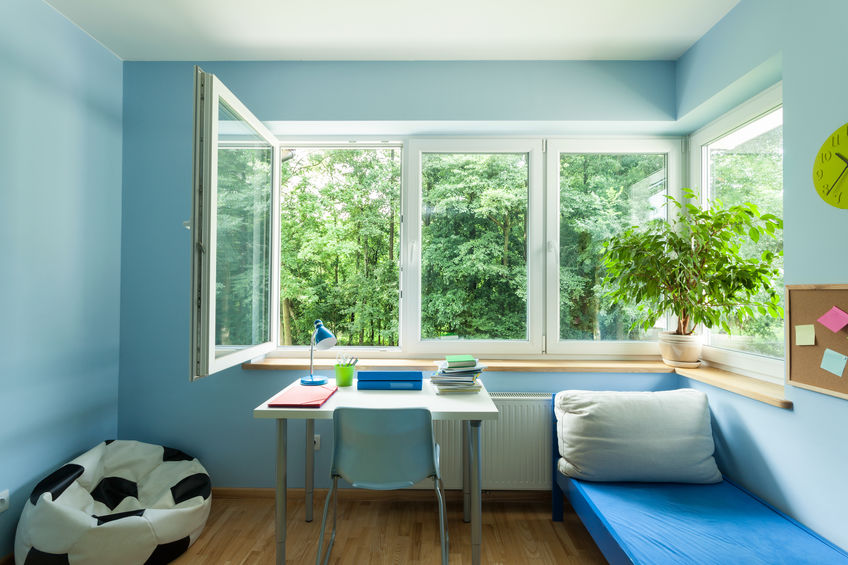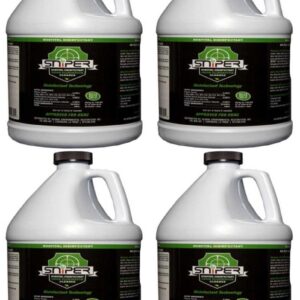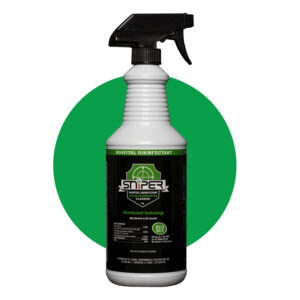June is National Healthy Homes Month
One of the important things you can do to maintain a healthy home, is to maintain and improve your home’s Indoor Air Quality (IAQ). The EPA regularly tells us that your indoor air can be up to 400% MORE polluted than outdoor air. Since we spend so much time indoors, it is important for the health of your family that the indoor air not be polluted and instead, be a healthy place to relax, work, sleep, play and to enjoy. Here are some strategies to help you improve your home’s Indoor Air Quality.
Wait – why is indoor air so much worse than outside air?
The main reason is that homes are built to seal tightly, keeping inside air in, and outside air out. This has the benefit of keeping our energy bills as low as possible. On the other hand, anything toxic that gets into your home, can’t get out, so those toxins accumulate.
Solutions and Strategies
Source control
Find pollution sources in your home and reduce those emissions. If you have a gas stove, it can be adjusted to decrease the amount of pollutants it releases. Other sources can be sealed or enclosed. New items may need time to ‘offgas’ before bringing them into your home. New mattresses are a good example. Paint that bookshelf outside where any VOC’s released are not inside. Allow it to sit a day or two if possible to further reduce the volatiles otherwise released inside. Not allowing pollution sources inside your home is the best kind of prevention. It’s the easiest and cheapest.
Do not smoke inside your home. You already know this. It’s solid thinking.
Avoid using bleach as a cleaning agent! There is no good reason to ever use bleach as a cleaning agent inside your home. You have alternatives that are nowhere near as toxic. Avoiding bleach inside your home is an easy way to improve your home’s indoor air quality.
Increased Ventilation
An easy way to improve IAQ is to increase the amount of outdoor air coming in. This is most often useful during mild weather because you can just open the windows. Running the exhaust fans in the kitchen, bathroom and laundry room will also increase outside air coming in. Increasing outside ventilation dilutes the pollution that would otherwise accumulate. Modern home construction seals homes tightly to reduce the infiltration of outside air. This results in lower energy bills, but the unintended side effect is that pollutants can’t get out. Ventilation reverses this effectively, resulting in improved home Indoor Air Quality.
The EPA says, “The most economical and effective way to address indoor air pollution is usually to reduce or eliminate avoidable sources of pollutants and then to exhaust to the outdoors the unavoidable particles, gases, and excessive water vapor that come from normal indoor activities such as cooking, cleaning, and showering.”
Filters and Air Cleaners
In the hottest and coldest months of the year, it may not be easy to ventilate your way out of indoor air pollution. This is when filtration can help. Your HVAC system has an air filter for this reason. When replacing the filter, choose the one with the highest filtration standard (it filters out the smallest particles). This can go a long way towards improving your IAQ.
Particulate air filtration only removes particles and does nothing to remove chemicals and VOC’s from your air. There are specialty filters for this, but they are expensive. It is smarter and more appealing to use houseplants to remove VOC’s and other contaminants.
Some pollutants are not particulates and won’t be trapped in a particulate filter. A good example of this is the volatile organic compounds that are released from newly manufactured goods, from paints, glues and so on. One of the best ways to filter out these pollutants is – houseplants. Studies by NASA show that many of your favorite plants will filter VOC’s from your indoor atmosphere. Plants improve your home’s indoor air quality and make your home a better place to live.
Use “Green’ cleaning products
Green cleaning products leave no toxic residues and do not form toxic by-products as you are cleaning. Nok-Out and SNiPER both are definitely ‘green’ all-purpose cleaners in addition to their specialties of odor eliminating and disinfection. Most disinfectants are poisons – not SNiPER! At a ph of 8.5, both SNiPER and Nok-Out are ‘green’ and you can use them throughout your home for everyday cleaning that will not accumulate poisons in your indoor environment.
Related Reading
http://blog.nokout.com/allergy-season-and-indoor-air-quality/
http://blog.nokout.com/indoor-air-pollution-part-1/
http://blog.nokout.com/indoor-air-pollution-sick-building-syndrome-part-2/
http://blog.nokout.com/indoor-air-pollution-the-green-solution/






Love love love Sniper and Nok-Out. Been using them for years. I have a question about my daughter and her sensitivity to smells. She is pregnant and she is confined to her bedroom as all smells are pugnant to her. Can we use Nok-Out and if so, how? Thank you.